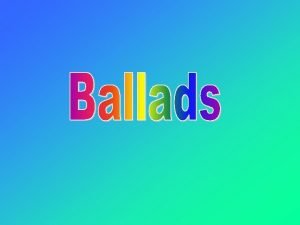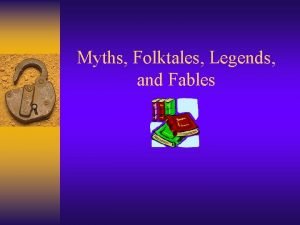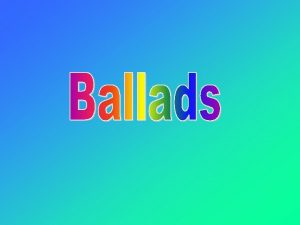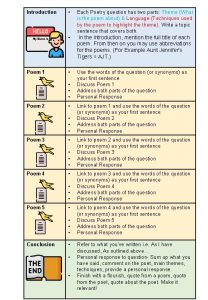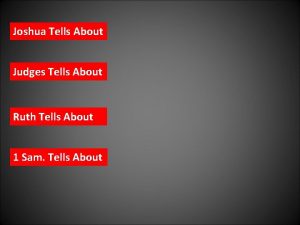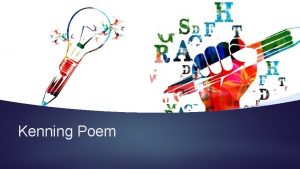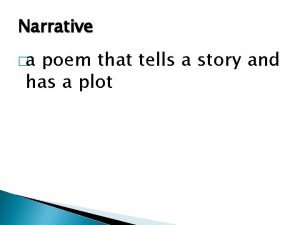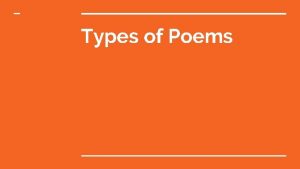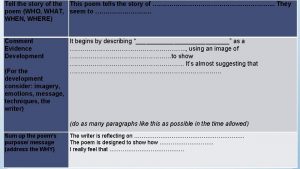A songnarrative poem transmitted orally that tells a










- Slides: 10


• A song/narrative poem transmitted orally that tells a story • Focuses on one incident • Begins in the midst of a crisis (in medias res) • Proceeds to the resolution with little background information, character development, or descriptive detail

Early Ballads often included: • • • Tragic love Domestic conflicts Wars Shipwrecks Sensational crimes Exploits of outlaws

Just like today with tabloid headlines and soap operas, certain forms of popular entertainment tended toward the sensational. Plot Examples: • Three dead sons visit mother for dinner • A maiden is headed for the gallows, and her family refuses to help

Later ballads often included: • Historical events • Romantic heroes • These ballads were written toward end of the Middle Ages when English was accepted as a language of literary merit.

• Four lines per stanza • Second and fourth lines rhyme and are often shorter than the first and third lines (ABCB rhyme scheme)

• Stock descriptive phrases • A word or phrase habitually used by a group of people: a cliché • Example: blood-red wine • One less thing for the singer to remember • Refrain in each stanza (repetition) • Contributed to the song’s rhythm and reinforced its theme • Provided the singer with time to think of the next verse • Incremental repetition • A line or stanza is repeated, but with an addition that advances the story

• Treats a highly dramatic situation in the simplest language • Uses a considerable amount of dialogue (sometimes local dialect) • Because ballads were well-known, the folk balladeer could often skip parts, which allowed him to develop parts that interested him. This accounts for the gaps in plots – “leaping and lingering”

continued • Ballads deal with: • Strong elemental passions of humanity • Powerfully depicted love • Hatred, faith, revenge, fear, courage, loyalty – Many involve the supernatural and end tragically

• Work of known professional poets • These poets were so impressed by the vigor and emotion of the ballads that they imitated them. • Generally more sophisticated, subtle, and subjective― more psychological – Example: “The Rime of the Ancient Mariner”
 A song transmitted orally which tells a story is called
A song transmitted orally which tells a story is called Oral vs verbal
Oral vs verbal Fables and legends
Fables and legends Answer these questions orally
Answer these questions orally Hãy nói thật ít để làm được nhiều
Hãy nói thật ít để làm được nhiều Thơ thất ngôn tứ tuyệt đường luật
Thơ thất ngôn tứ tuyệt đường luật Tôn thất thuyết là ai
Tôn thất thuyết là ai Phân độ lown
Phân độ lown Chiến lược kinh doanh quốc tế của walmart
Chiến lược kinh doanh quốc tế của walmart Gây tê cơ vuông thắt lưng
Gây tê cơ vuông thắt lưng Block nhĩ thất độ 2 mobitz 1
Block nhĩ thất độ 2 mobitz 1
